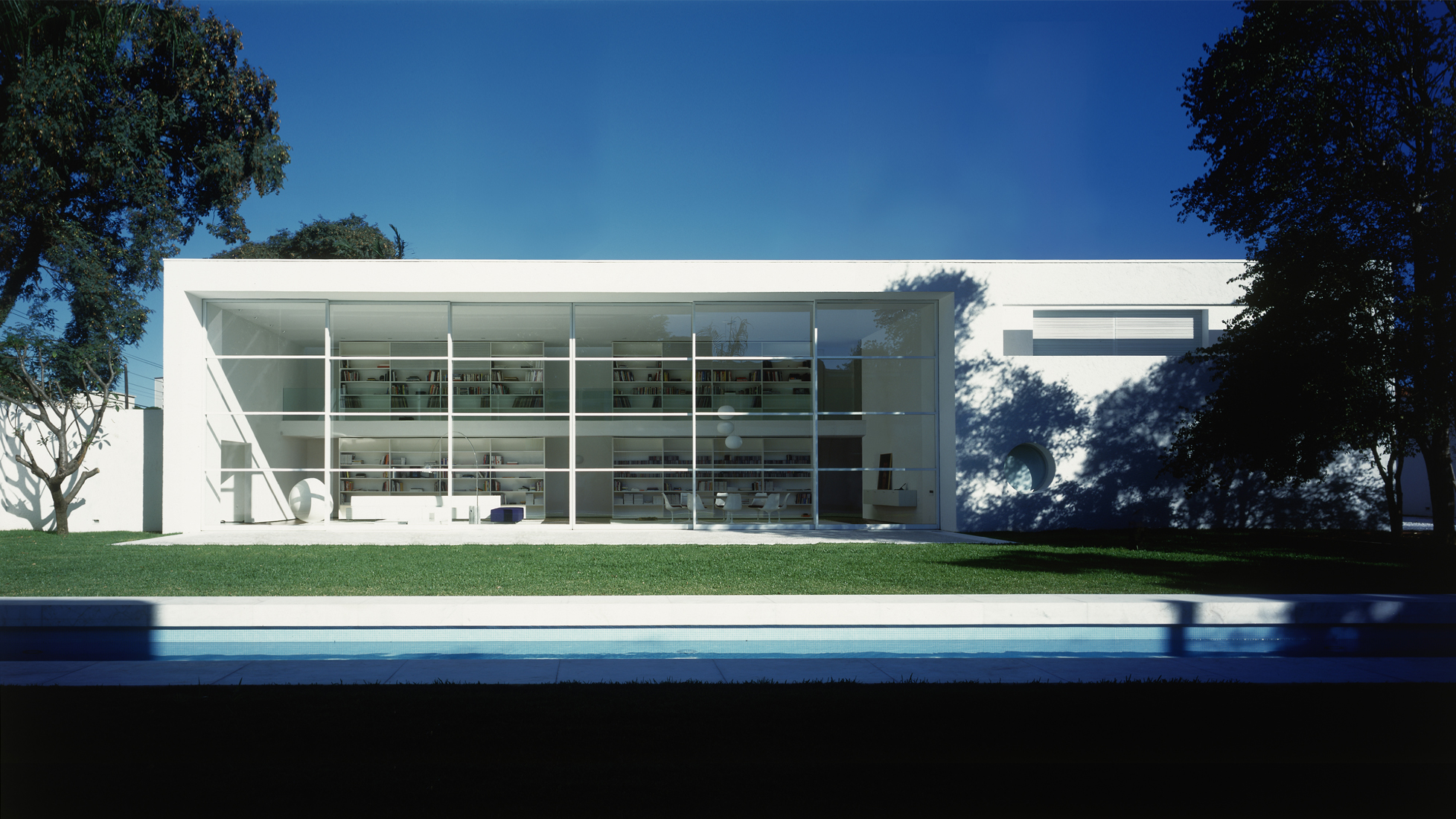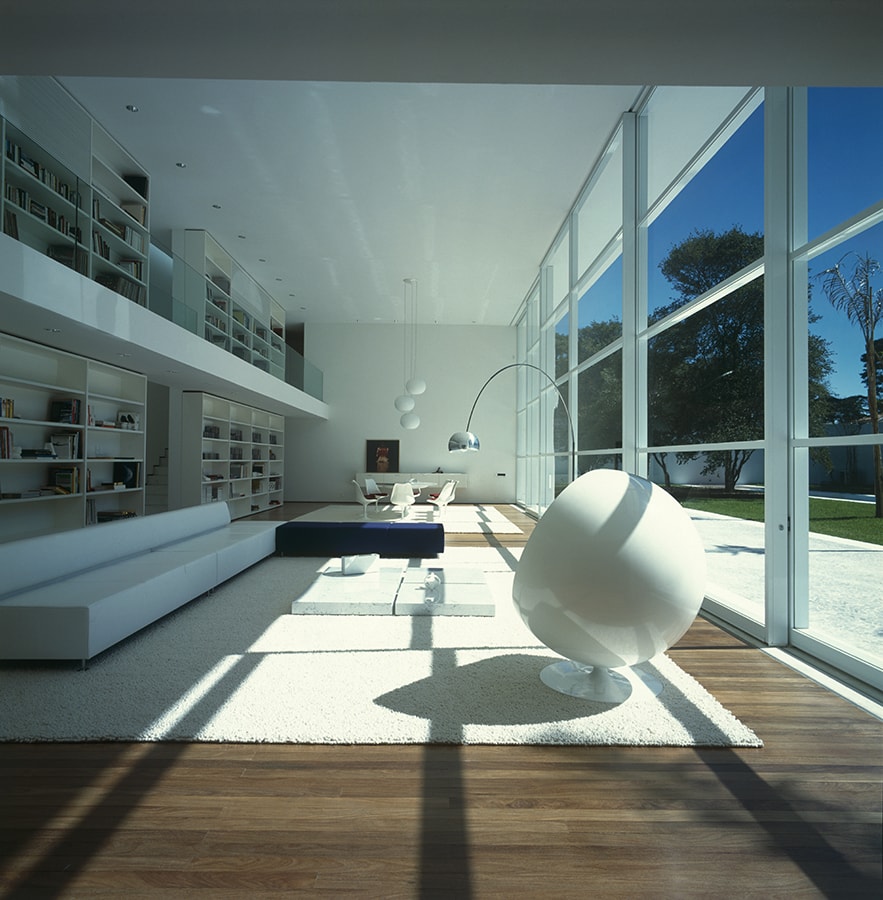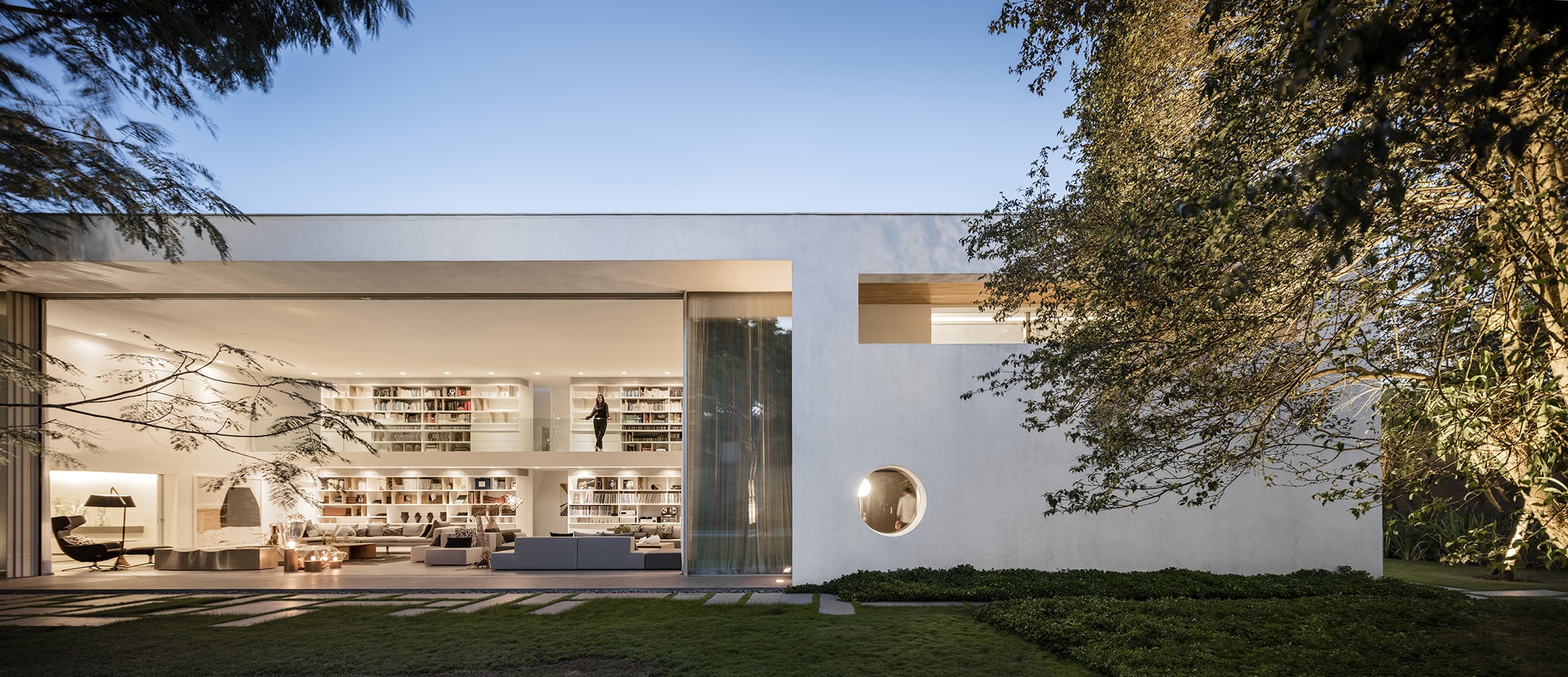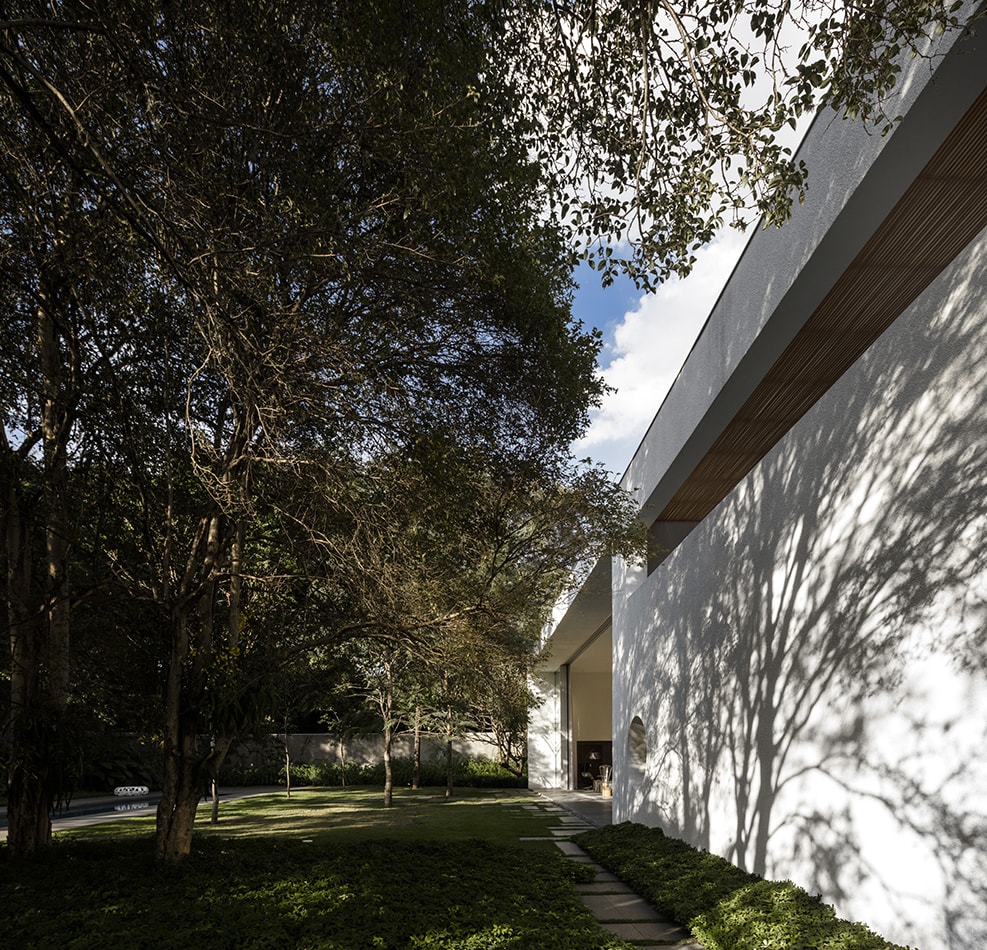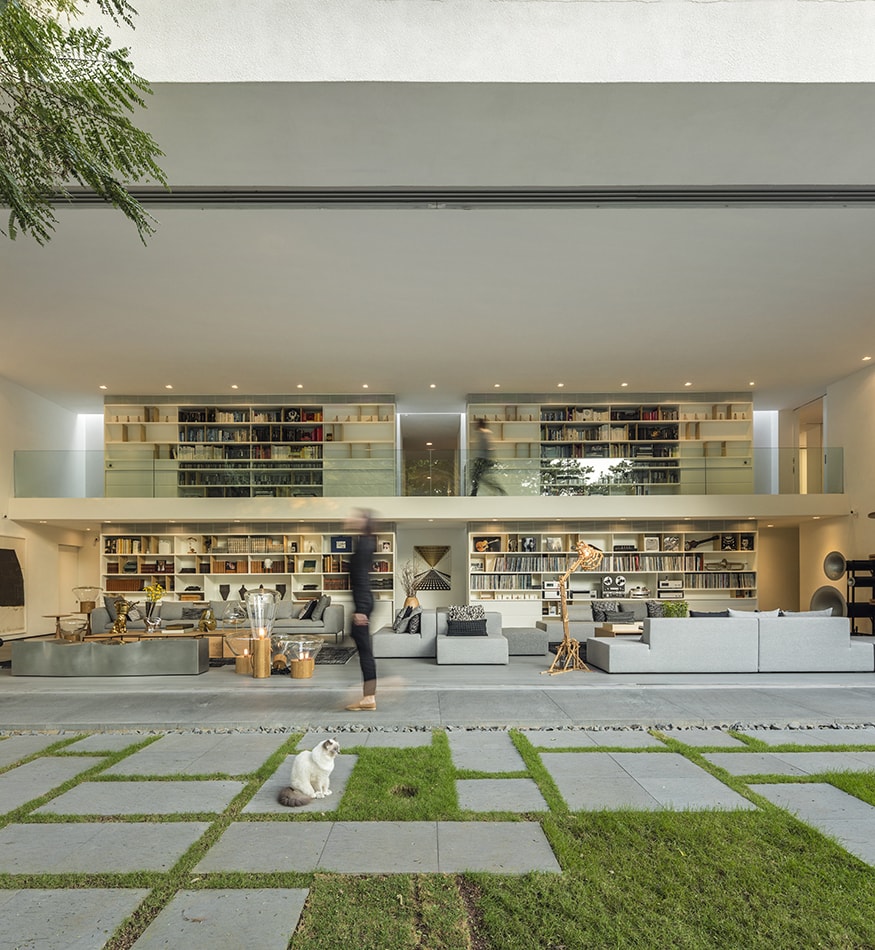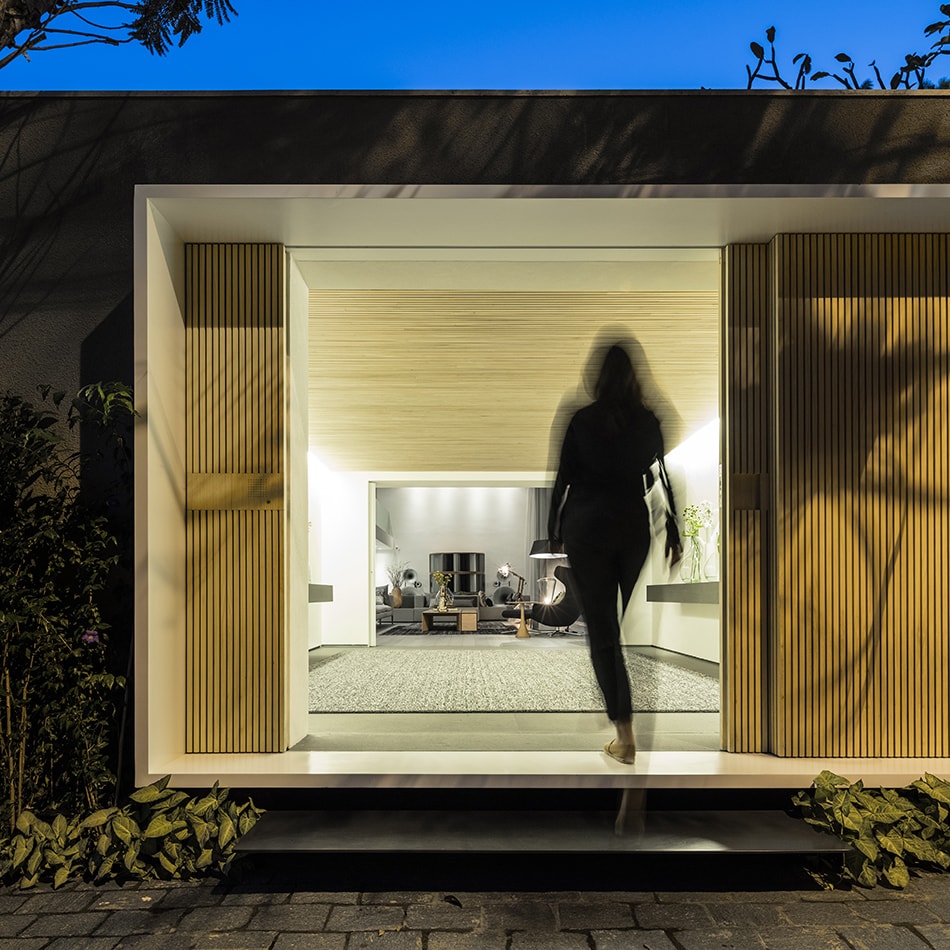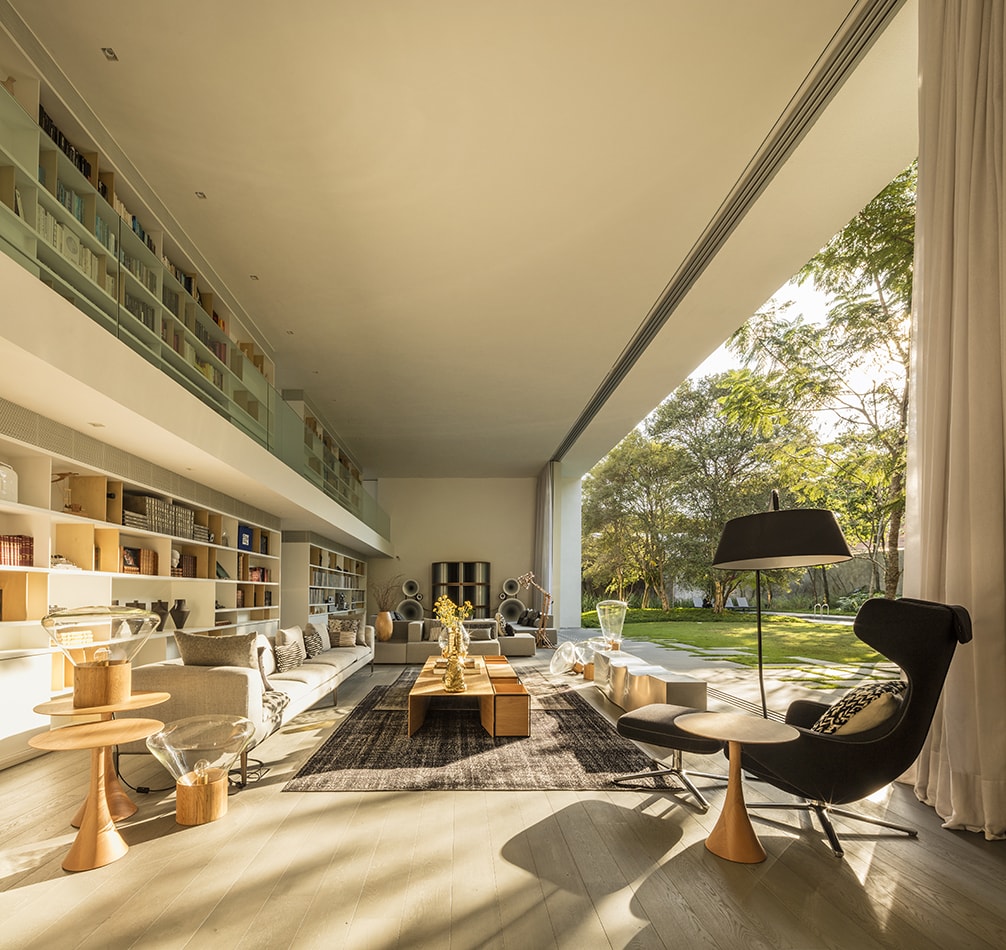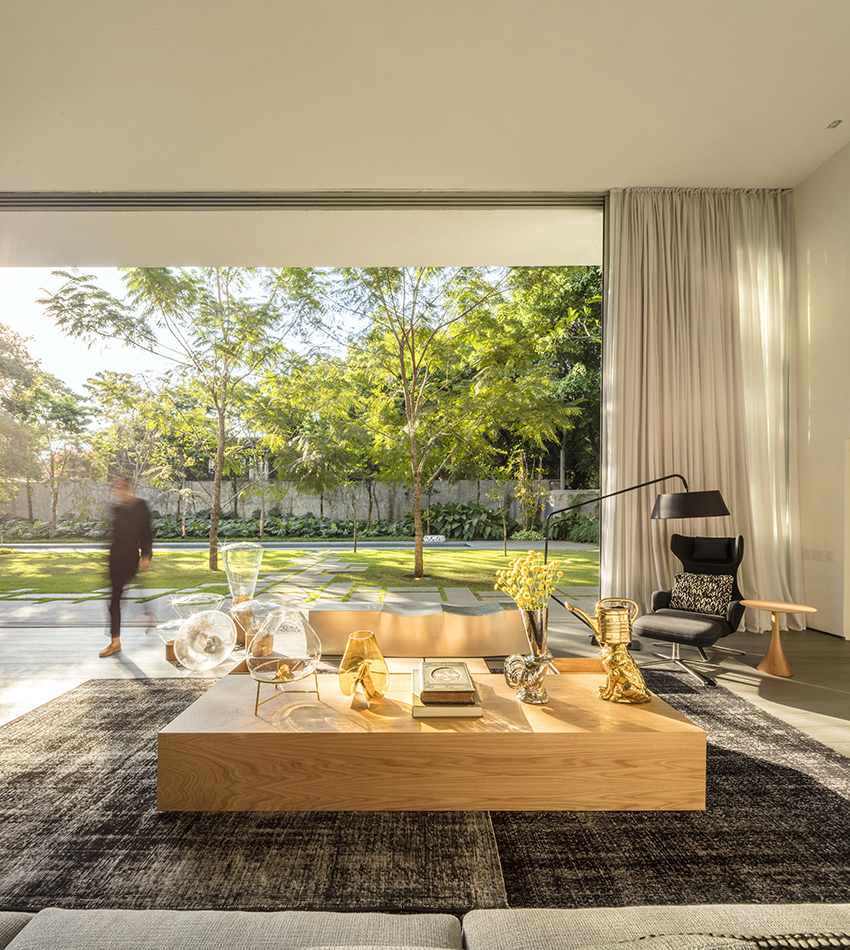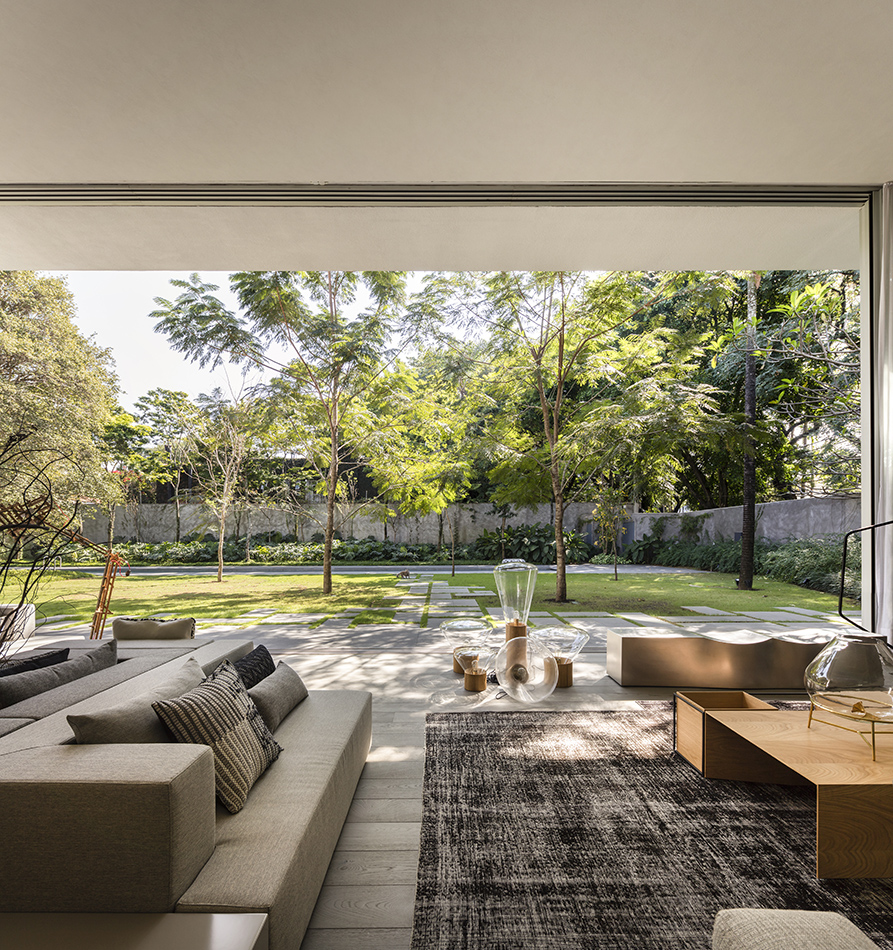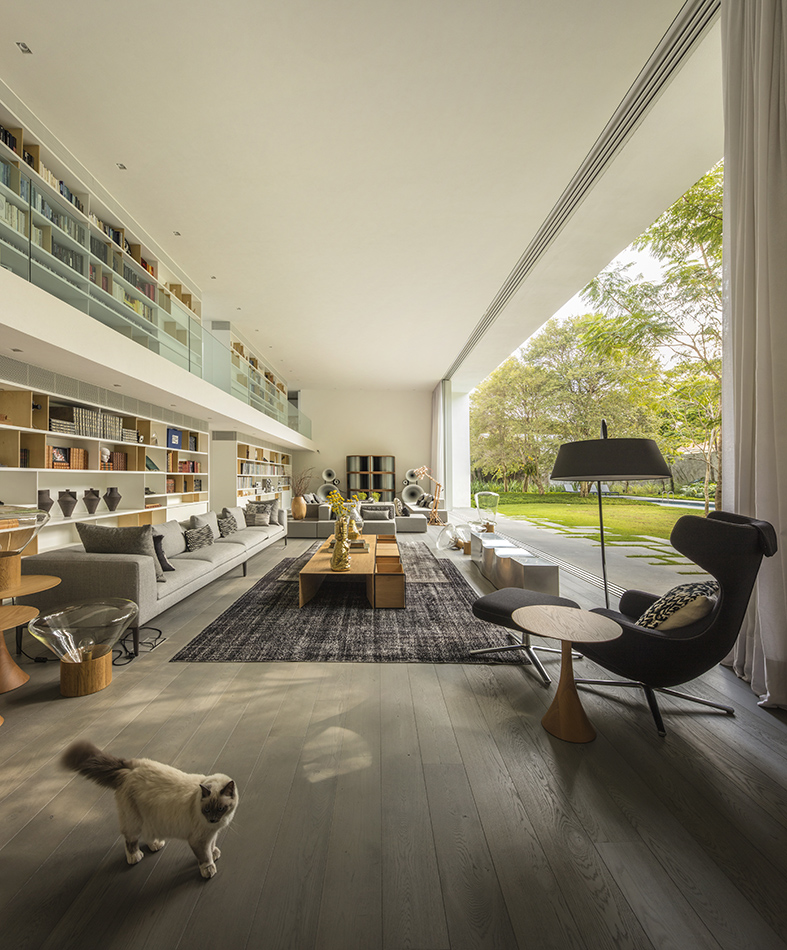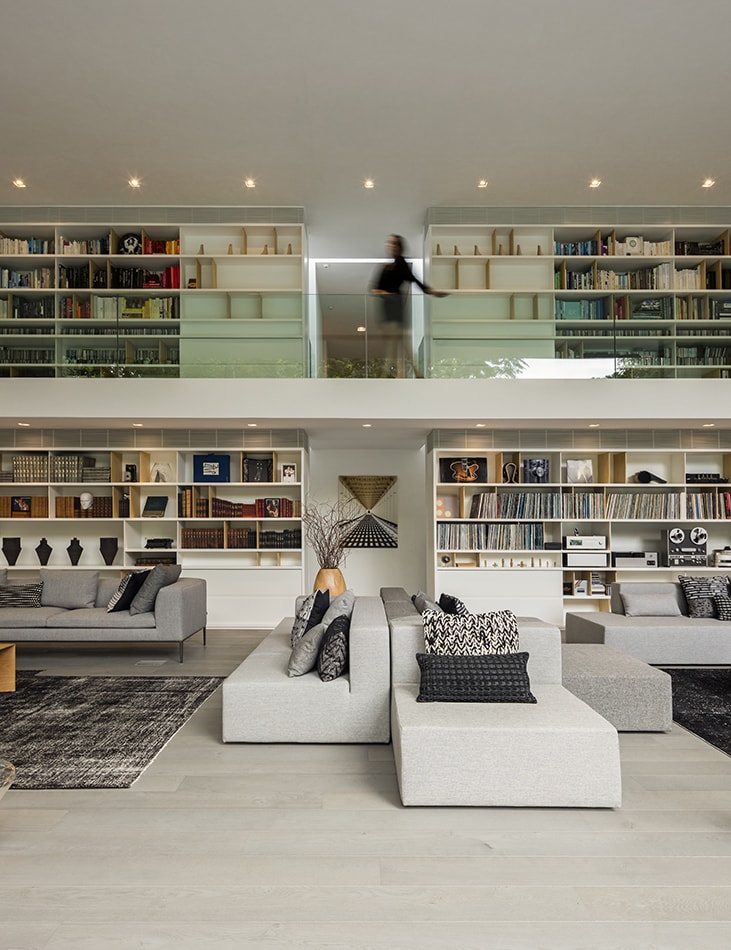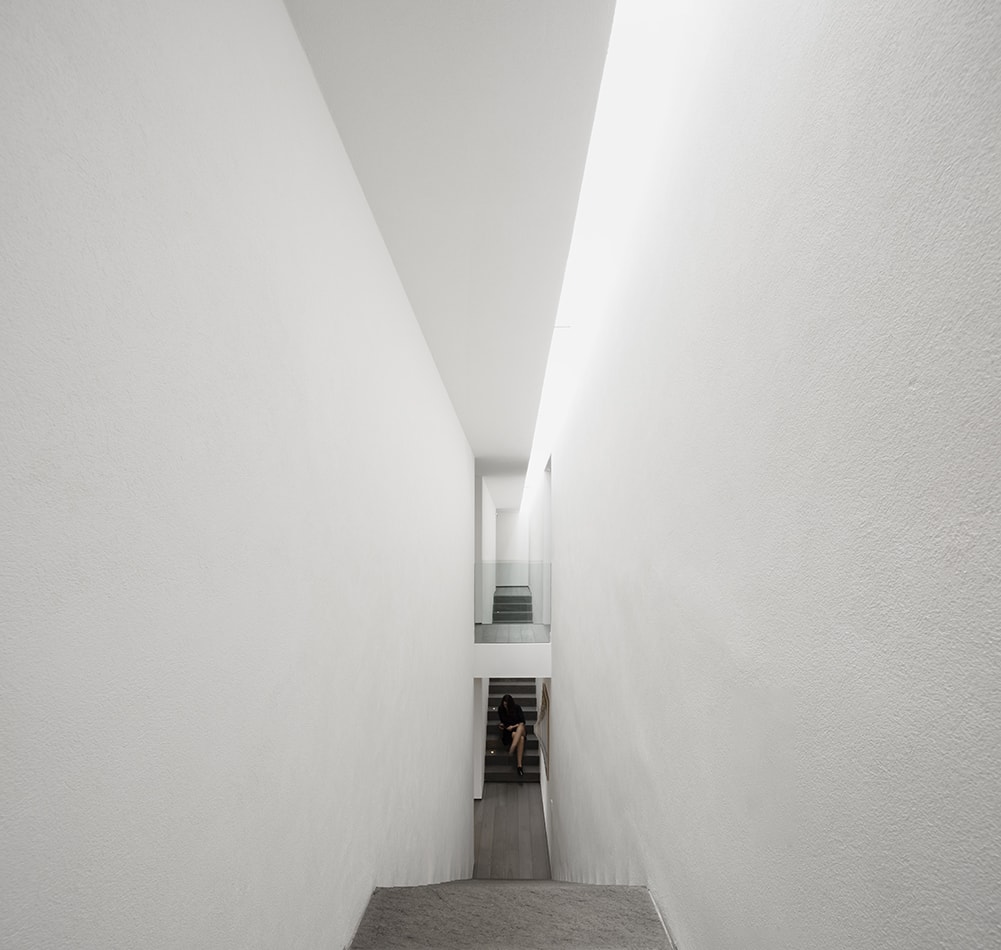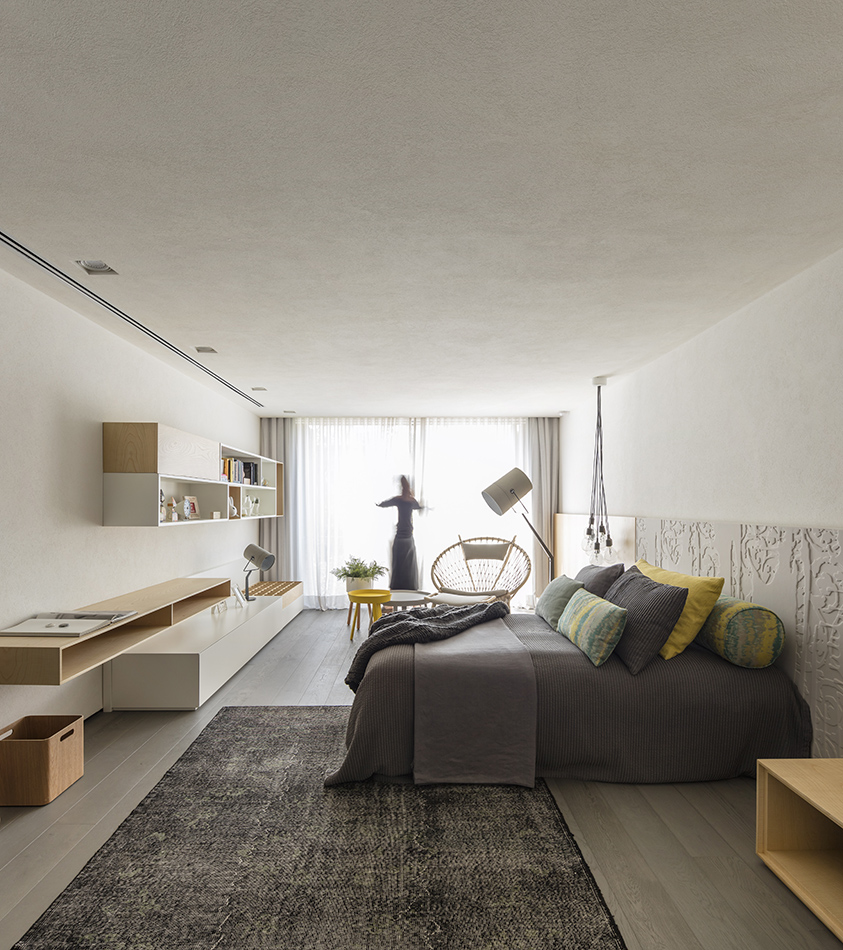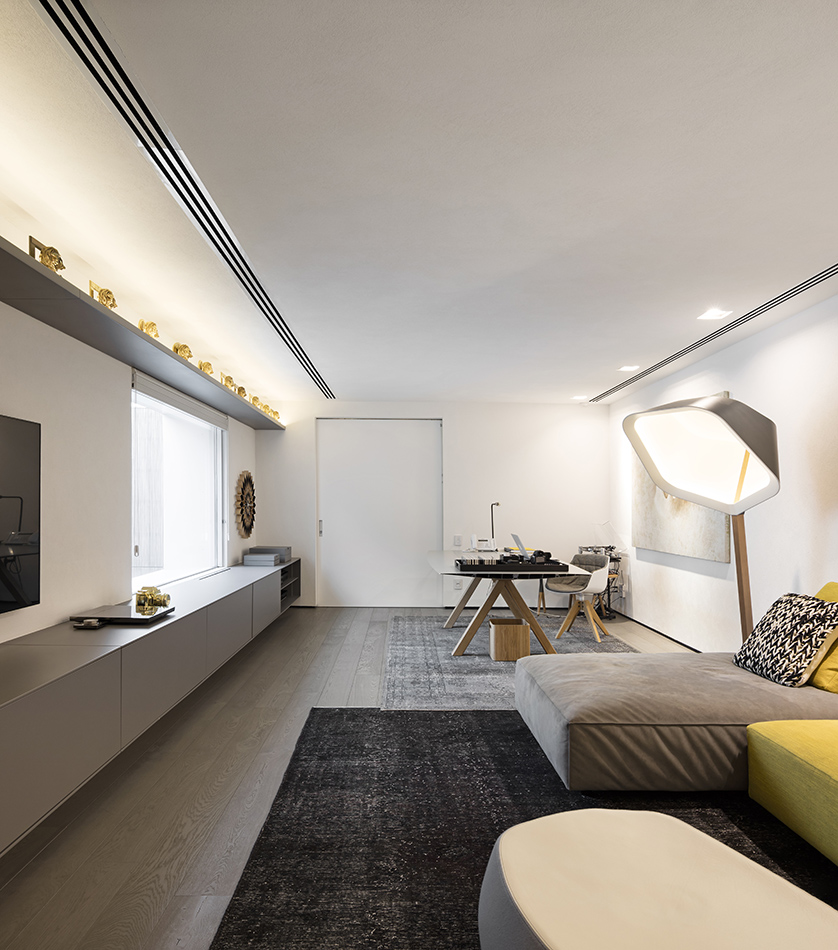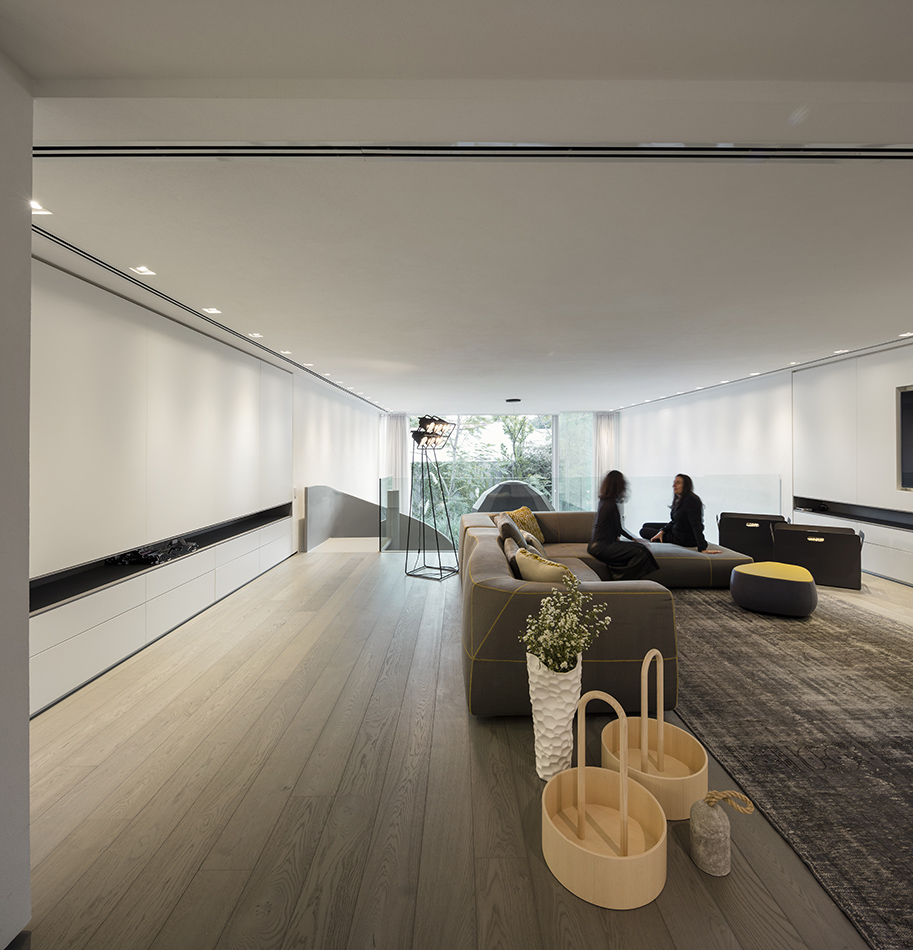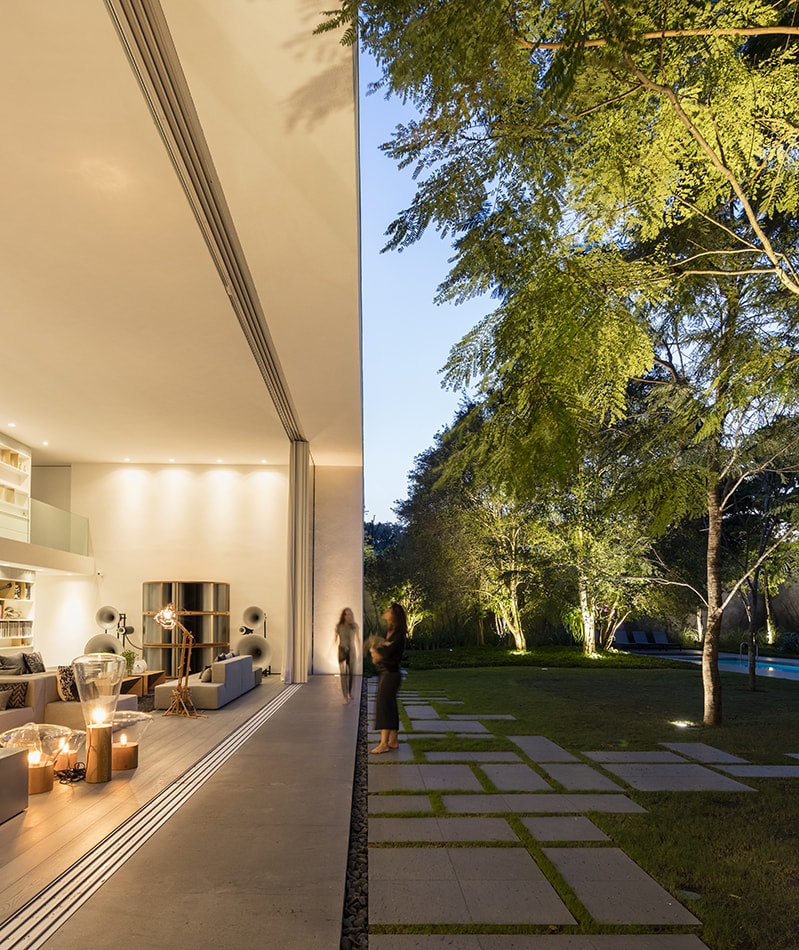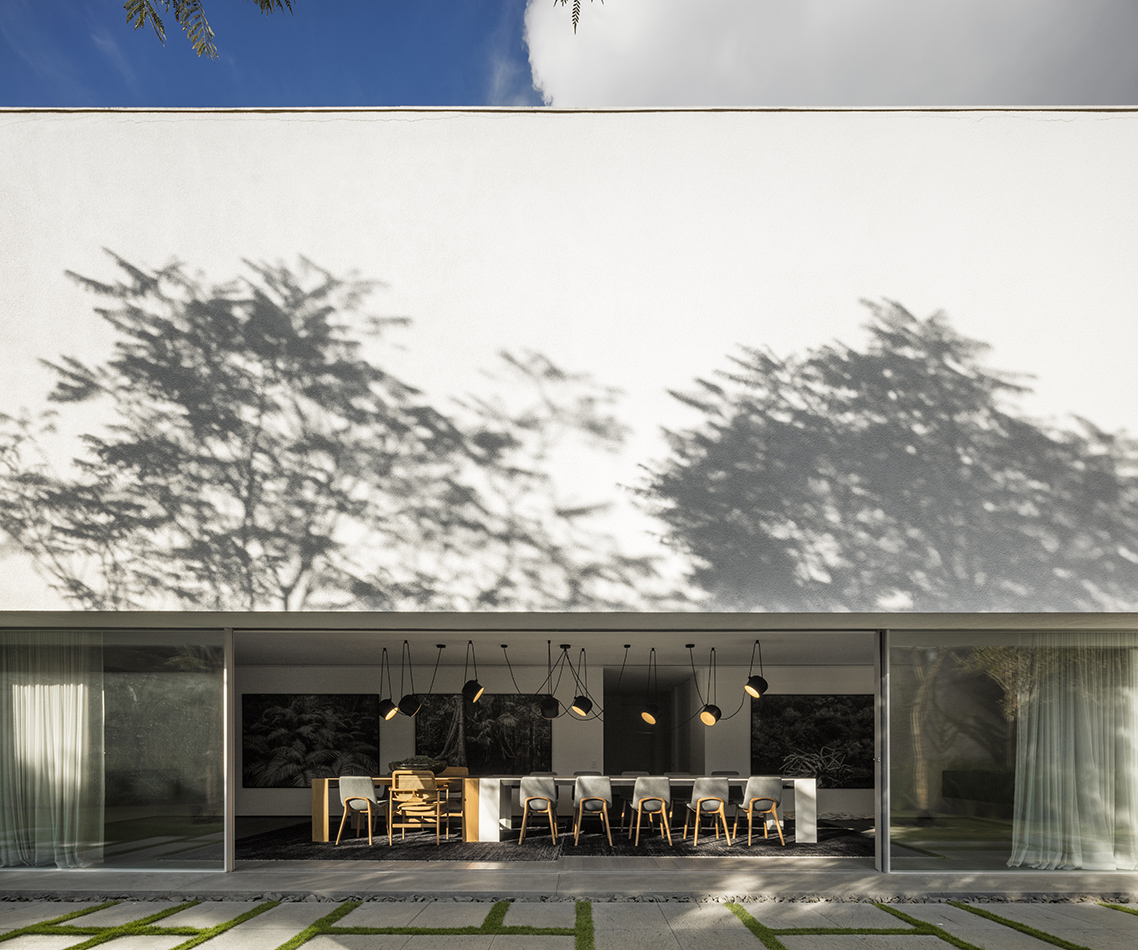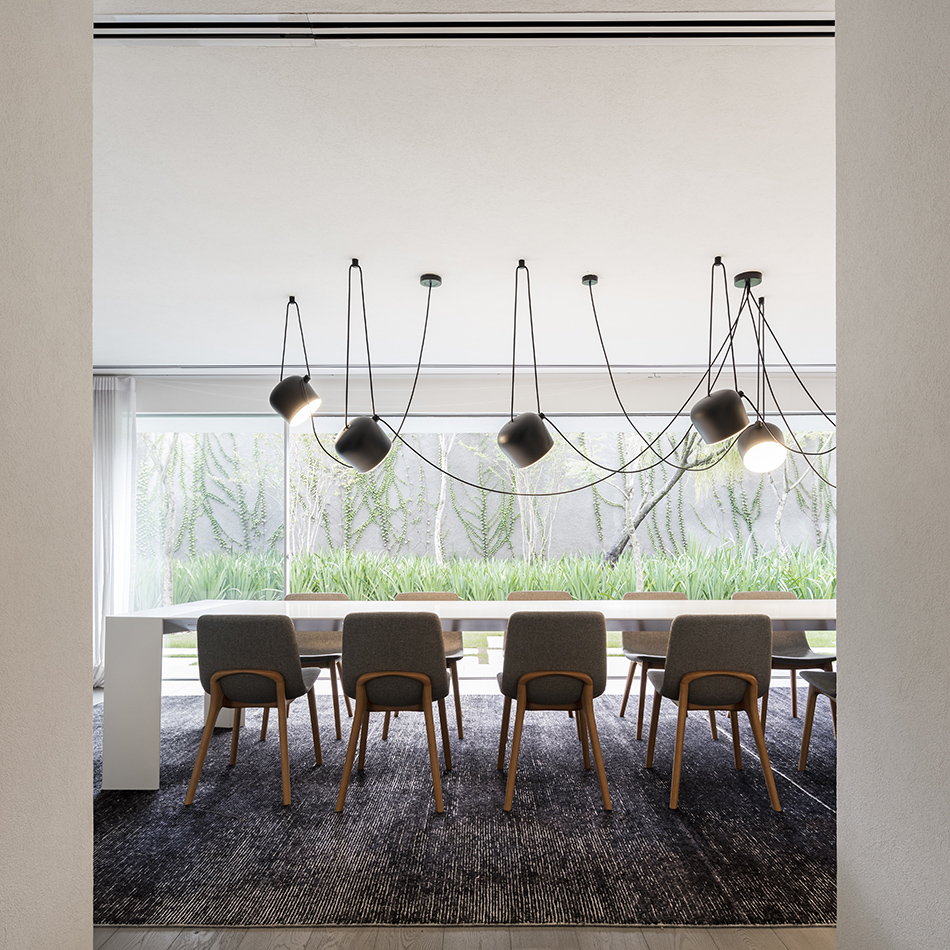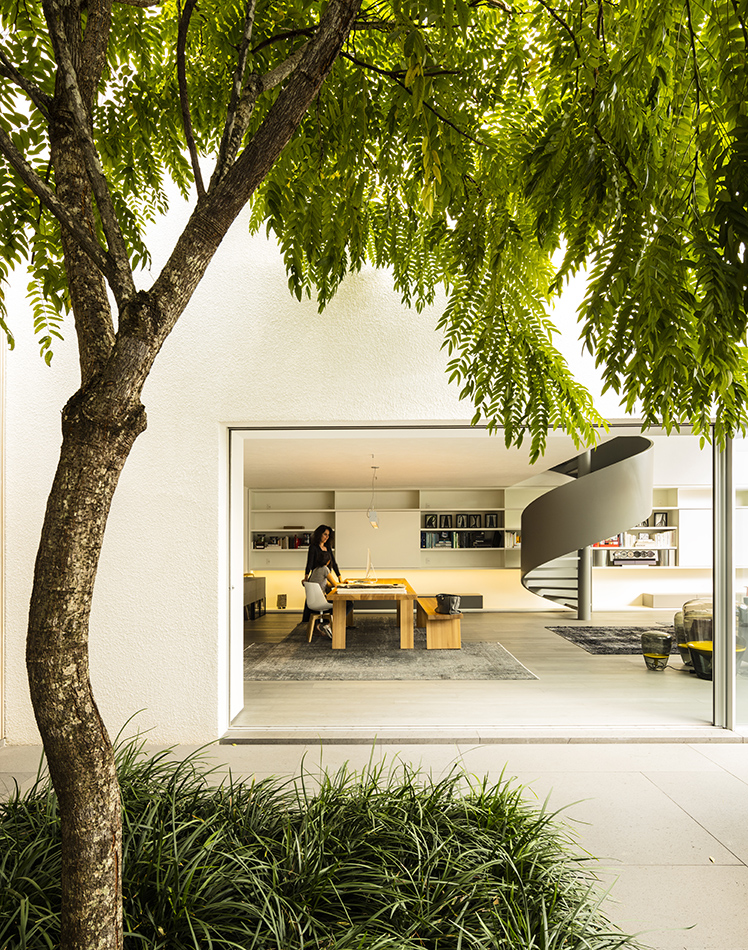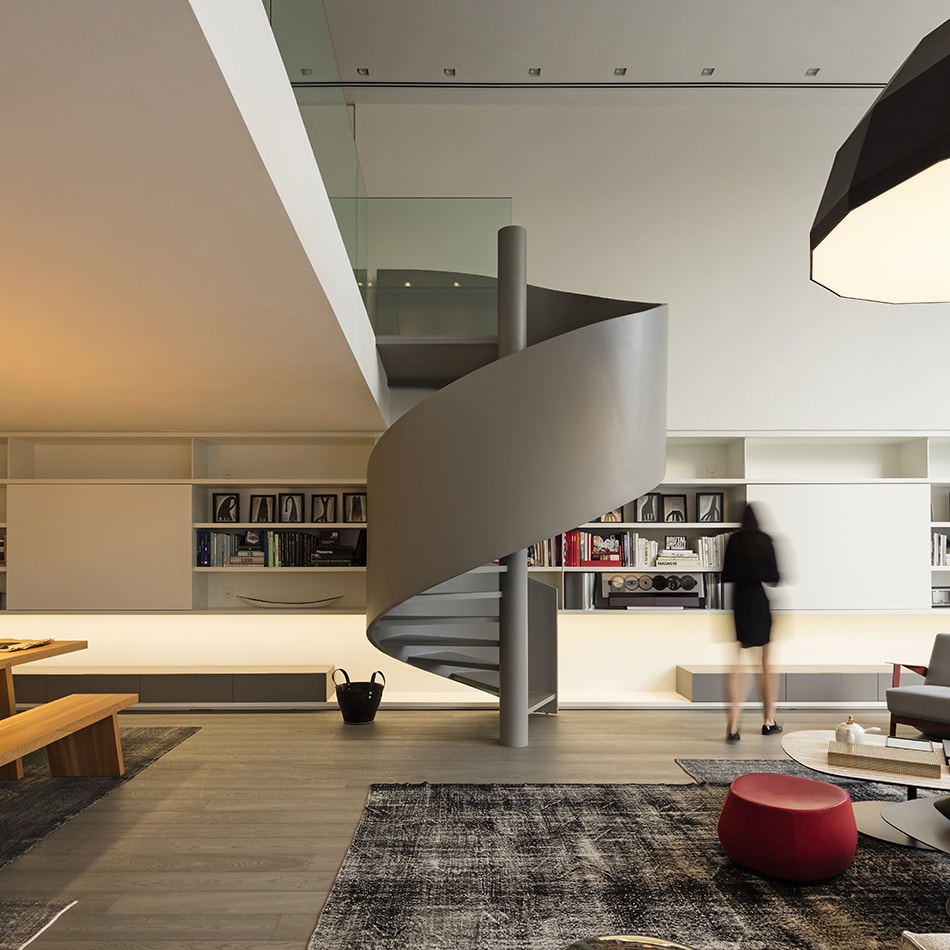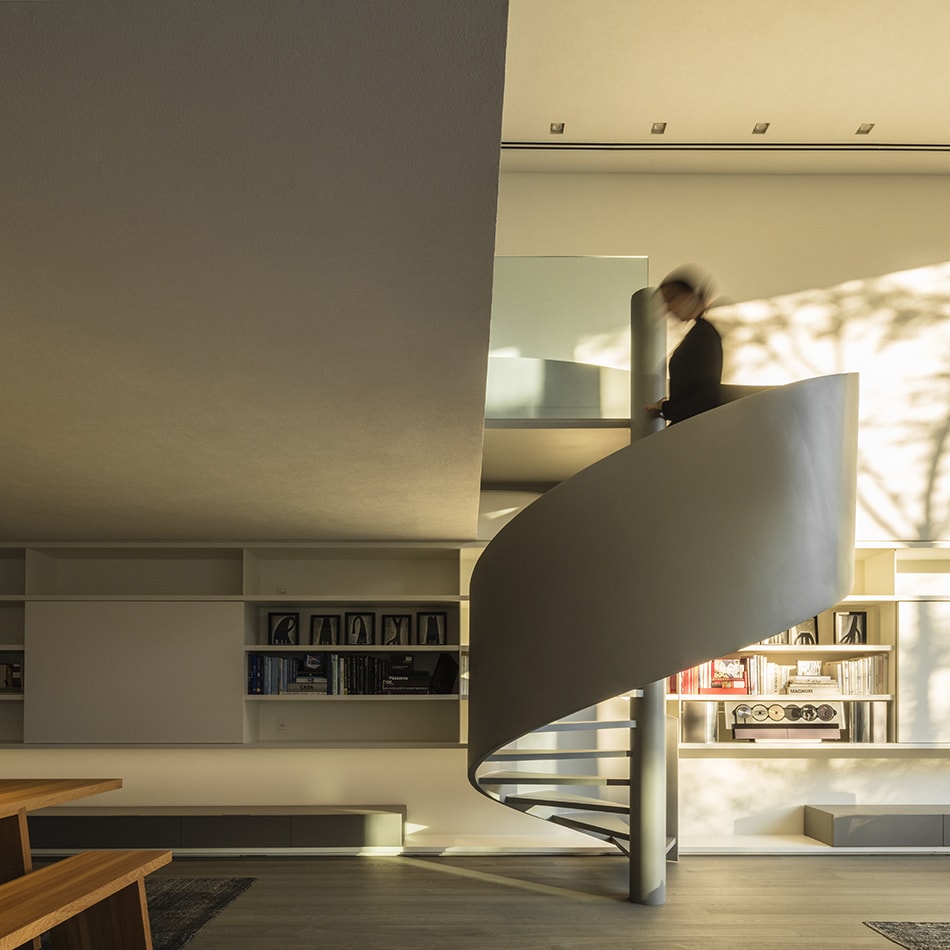The Gama Issa House summarizes a phase of Marcio Kogan’s work that favored (1) white surfaces, (2) formal compositions starting from the intersection of volumes and (3) internal spaces with varied ceiling heights, creating diverse architectural sensations for each space. These experiences began approximately 10 years earlier in Goldfarb House (1986-1988) and continued up until the conclusion of Gama Issa House.
Articulated by a living room with a ceiling height of 5.4 meters, the social space opens out to the garden via a sliding glass door that covers a span of 17 meters. The bookcase serves as cladding for the longitudinal wall of the living room and configures, also, a visual interruption for two symmetric staircases.
Simultaneous to this project, Kogan’s office was reorganized with the addition to the team of five architects – Diana Radomysler, Bruno Gomes, Renata Furlanetto, Samanta Cafardo and Suzana Glogowski – and the practice name becomes studio mk27. Thus, Gama Issa House is a kind of initial milestone for the office as it has been structured during the following decades.
This was the first of Kogan’s projects to get international acclaim after nomination for the World Architecture Award (WAA) in Berlin, in 2002. The house was retrofitted in 2015 when the finishing, decoration and window frames were changed, and a new lateral volume (a workshop) perpendicular to the pool was added.
The decor of the 2000’s version included furnitures of modern designers such as Eero Saarinen and resulted in a futuristic minimalist atmosphere that brought back the space race nostalgia of the 60’s and 70’s. In 2015, pieces by designers such as Piero Lissoni, Patricia Urquiola and Jader Almeida were added to the space.
Gabriel Kogan
São Paulo, January 21, 2002
It is ten o`clock at night. Very hot. I use this moment of rare calm and solitude to design the new house. I look through the window and parked in front of the building is a BMW X5. A young man of about 27 slides out of the car with a stunning blonde fearfully clutching her Prada bag. An almost-black, almost-beggar approaches asking if he can watch the car for R$ 5,00.
They go into a Japanese restaurant. On the radio, which I will turn off within ten seconds, there is talk of the most recent kidnapping and a prision rebellion. I read my notes of the first meeting with the clients, a couple in advertising. We spoke of an enormous library in the living-room with double high ceilings, enormous windows opening completely to the garden, a pool 3 x 30m, a kitchen with an orange lunch table in the center, two symmetric marble staircases lit by focused natural light, a precisely detailed work studio, spaces of rare and elegant proportions which always relate to the exterior differently, white textures, an Eero Aarnio ball club chair, minimalism, the 60’s, electronic music, Stockhausen Cage, the latest issue of Visionaire magazine, a recipe for spaghetti al mare and finally “My Uncle” by Jacques Tati.
I think of a single enormous volume wrapping everything: a white box. In São Paulo, we don’t need to be concerned about environmental coherence, it is total chaos, the most absolute chaos. In this city, the world’s ugliest, which overflows energy, vibrant like no other, loved and hated, anything that is projected will be totally integrated into the city.
Ah, yes, don’t let me forget an enormous wall protecting the house, covered in natural wood (maybe from the last tree of the Amazon), and which, certainly, will be completely covered by grafitti, giving the final touch in perfect harmony with the environment.
From a humble architect of the third world.
Marcio Kogan
location > são paulo . sp . brazil
project > january . 2012
completion > may . 2016
site area > 2.100 sqm
original area > 827 sqm
built area > 387 sqm
-
architect > marcio kogan
co-architect > lair reis
interiors > diana radomysler / claudia issa
architecture team > anna helena villela . beatriz meyer . luciana antunes . oswaldo pessano
communication team > carlos costa . laura guedes . mariana simas
-
contractor > phase 1: rogério perez / phase 2: sc consult
steel structure > eduardo duprat
-
photographer > fernando guerra
The Gama Issa House summarizes a phase of Marcio Kogan’s work that favored (1) white surfaces, (2) formal compositions starting from the intersection of volumes and (3) internal spaces with varied ceiling heights, creating diverse architectural sensations for each space. These experiences began approximately 10 years earlier in Goldfarb House (1986-1988) and continued up until the conclusion of Gama Issa House.
Articulated by a living room with a ceiling height of 5.4 meters, the social space opens out to the garden via a sliding glass door that covers a span of 17 meters. The bookcase serves as cladding for the longitudinal wall of the living room and configures, also, a visual interruption for two symmetric staircases.
Simultaneous to this project, Kogan’s office was reorganized with the addition to the team of five architects – Diana Radomysler, Bruno Gomes, Renata Furlanetto, Samanta Cafardo and Suzana Glogowski – and the practice name becomes studio mk27. Thus, Gama Issa House is a kind of initial milestone for the office as it has been structured during the following decades.
This was the first of Kogan’s projects to get international acclaim after nomination for the World Architecture Award (WAA) in Berlin, in 2002. The house was retrofitted in 2015 when the finishing, decoration and window frames were changed, and a new lateral volume (a workshop) perpendicular to the pool was added.
The decor of the 2000’s version included furnitures of modern designers such as Eero Saarinen and resulted in a futuristic minimalist atmosphere that brought back the space race nostalgia of the 60’s and 70’s. In 2015, pieces by designers such as Piero Lissoni, Patricia Urquiola and Jader Almeida were added to the space.
Gabriel Kogan
São Paulo, January 21, 2002
It is ten o`clock at night. Very hot. I use this moment of rare calm and solitude to design the new house. I look through the window and parked in front of the building is a BMW X5. A young man of about 27 slides out of the car with a stunning blonde fearfully clutching her Prada bag. An almost-black, almost-beggar approaches asking if he can watch the car for R$ 5,00.
They go into a Japanese restaurant. On the radio, which I will turn off within ten seconds, there is talk of the most recent kidnapping and a prision rebellion. I read my notes of the first meeting with the clients, a couple in advertising. We spoke of an enormous library in the living-room with double high ceilings, enormous windows opening completely to the garden, a pool 3 x 30m, a kitchen with an orange lunch table in the center, two symmetric marble staircases lit by focused natural light, a precisely detailed work studio, spaces of rare and elegant proportions which always relate to the exterior differently, white textures, an Eero Aarnio ball club chair, minimalism, the 60’s, electronic music, Stockhausen Cage, the latest issue of Visionaire magazine, a recipe for spaghetti al mare and finally “My Uncle” by Jacques Tati.
I think of a single enormous volume wrapping everything: a white box. In São Paulo, we don’t need to be concerned about environmental coherence, it is total chaos, the most absolute chaos. In this city, the world’s ugliest, which overflows energy, vibrant like no other, loved and hated, anything that is projected will be totally integrated into the city.
Ah, yes, don’t let me forget an enormous wall protecting the house, covered in natural wood (maybe from the last tree of the Amazon), and which, certainly, will be completely covered by grafitti, giving the final touch in perfect harmony with the environment.
From a humble architect of the third world.
Marcio Kogan





